
Welcome to the Club of Amsterdam Journal.
The world is starting a shift towards a new, low-carbon energy future. But it will take several decades to get there. Shell is taking steps today to help build the energy system of tomorrow: producing more cleaner burning natural gas; working to deliver advanced fuels and lubricants and lower-carbon biofuels; and building a capability in carbon capture and storage.
…. interested in knowing more …. join us next year at the event about the future of Shell – Thursday, 17 March!
Felix Bopp, editor-in-chief
Energy 2020

Energy 2020 – A strategy for competitive, sustainable and secure energy
By EU Directorate-General for Energy
The Communication defines the energy priorities for the next ten years and sets the actions to be taken in order to tackle the challenges of saving energy, achieving a market with competitive prizes and secure supplies, boosting technological leadership, and effectively negotiate with our international partners.
“Europe’s energy sector is on the threshold of an unprecedented period of change. Secure energy supplies and affordable prices are crucial for our growth, job creation and quality of life. There is no time to waste if we are to ensure a brighter future for our energy market.” – Günther H. Oettinger, European Commissioner for Energy
Citizens’ summary
WHAT’S THE ISSUE?
The EU committed to cut its greenhouse gas emissions to combat climate change. The energy system must become low-carbon. Dependence on imports of oil and gas is growing. The EU needs to save energy and find new energy alternatives and to produce more of its own energy. Energy prices are rising. Citizens and businesses are entitled to have access to affordable energy.
WHO WILL BENEFIT AND HOW?
All citizens will benefit from lower greenhouse gas emissions, more secure and affordable energy if strategic decisions and measures are taken now to save energy, invest in lowcarbon energy alternatives and build intelligent and diversified energy networks. The development of new energy alternatives will sustain Europe’s competitiveness in growth and job-creating new industries. Saving energy will lower the energy bill for industries and households; it will lower the level of investments needed to replace aging capacity and infrastructure and it will increase our energy security.
WHY DOES ACTION HAVE TO BE TAKEN BY THE EU?
EU countries’ energy interdependence is growing. National energy decisions have an impact on other countries. Energy security needs a European policy on security of energy supply, the development of infrastructures and relations with transit and producing third countries. Policies for the development of renewable energy and research on new technologies are more efficient if coordinated at European level. The continental energy market offers much more efficiency and economies of scale. Energy infrastructure modernisation is needed to integrate growing renewable energy, increase energy security and develop intelligent networks. EU coordination is needed to fix priorities, facilitate financing and speed implementation.
WHAT EXACTLY WILL CHANGE?
The strategy will drive major efforts in:
energy market regulation, grid management and the security of energy systems; technical innovation and investments; education and incentives for domestic and business consumers to save energy, reduce wastage and switch to low-carbon technologies and fuels.
WHEN IS THE PROPOSAL LIKELY TO COME INTO EFFECT?
The strategy will be implemented until 2020. Several major proposals will be made in the coming months:
A Communication on the development of energy infrastructure in November 2010; An Energy Efficiency Action Plan in February 2011; A Roadmap towards a low-carbon energy system by 2050 in May 2011; A Communication on external energy policy in June 2011. […]

Conclusions
The EU is on the threshold of an unprecedented period for energy policy. Energy markets have been largely cushioned from the effects of global market turbulence in recent years as a result of liberalisation, ample supply and production capacities and adequate import possibilities. However, dramatic changes are afoot. Energy prices will be affected by the huge need for energy sector investments, as well as carbon pricing and higher international energy prices. Competitiveness, security of supply and climate objectives will be undermined unless electricity grids are upgraded, obsolete plants are replaced by competitive and cleaner alternatives, and energy is used more efficiently throughout the whole energy chain.
Member States and industry have recognised the scale of the challenges. Secure energy supplies, an efficient use of resources, affordable prices and innovative solutions are crucial to our long-term sustainable growth, job creation and quality of life. Member States have agreed that these challenges will be tackled most effectively by policies and action at EU level, by ‘Europeanising’ energy policy. This includes directing EU funding support towards public priorities that markets fail to meet and which bring the most European value.
The new EU energy strategy will require significant efforts in technical innovation and investment. It will foster a dynamic and competitive market and lead to a major strengthening of institutional arrangements to monitor and guide these developments. It will improve the security and the sustainability of energy systems, grid management, and energy market regulation. It will include extensive efforts to inform and empower domestic and business consumers, to involve them in the switch to a sustainable energy future, for example by saving energy, reducing wastage and switching to low-carbon technologies and fuels. Investments in low-carbon energy production will be further encouraged by market-based instruments such as emissions trading and taxation. The new strategy will take the first steps towards preparing the EU for the greater challenges which it may well have to face already by 2020. Above all, it will ensure better leadership and coordination at the European level, both for internal action and in relations with external partners.
The global energy system is entering a phase of rapid transition with potentially far-reaching implications that will unfold in the next decades. Europe has to act before the window of opportunity closes. Time is short. Thus, the Commission will present most of the proposals to achieve the 2020 goals in the coming 18 months.
Discussion, adoption and implementation will be needed quickly. In this way, the EU will be better able to put in place the building blocks for the 2020 outcome – standards, rules, regulations, plans, projects, financial and human resources, technology markets, social expectations, etc. – and prepare Europe’s citizens for the challenges ahead.
Due to the long lead-in times for energy system changes taking action today does not guarantee that the structural changes needed for the low-carbon transition will be completed in the period to 2020, which this strategy covers. It is therefore necessary to look beyond the time scale of the present strategy to ensure that the EU is well-prepared for the 2050 objective of a secure, competitive and lowcarbon energy system. The Commission will therefore follow up this strategy with a complete roadmap for 2050 which will set the measures covered in this paper in a longer-term context and consider further, complementary steps.
Photos courtesy of
© Alexander Kirch/iStockphoto.com
© Tomas Bercic/iStockphoto.com
Next Event

Building a low-carbon energy future
Thursday, March 17, 2011
Registration: 18:30-19:00, Conference: 19:00-21:15
Location: Shell Technology Centre Amsterdam, Grasweg 31, 1031 HW Amsterdam
The event is supported by Shell
Please bring your ID and non-Dutch visitors your passport!
The speakers and topics are
Andrei Kotov, Commercial Adviser Global LNG, Shell Upstream International
the future of Gas
Guus Berkhout, Professor of Geosciences, Professor of Innovation
New Business Framework for the Energy Industry
Bill Spence, Manager Strategic Issues, Shell Upstream International
Energy Scenarios & the future of Shell
The event is moderated by Adriaan Kamp, Owner, Kamp Beheer




Solowheel

We’ve reinvented the wheel.
Solowheel is the smallest, greenest, most convenient People Mover ever invented. Gyroscope technology is behind this new self-balancing electric unicycle that is more compact and fun to ride than any folding electric bike!
Externally, the Solowheel consists of a wheel and two foldable foot platforms. Internally, the inner workings of the Solowheel use gyro sensors, a 1000-Watt motor and a rechargeable Lithium-ion battery. All this technology is housed under a visually appealing, slim case with leg pads and a handle for easy carrying.
100% battery operated; leaning controls your speed. Lean forward to go forward and backward when you want to slow down. The highly efficient lithium ion battery recaptures energy when going downhill or slowing down. It has a two hour battery life and can be fully recharged in only forty-five minutes.
The Solowheel is easy to learn. Because of the gyro-sensors and left and right steering capability, you can literally step on and go. The Solowheel is very portable and weighs only twenty pounds. This allows you to carry your wheel with you: into a store or restaurant, on an elevator, into work, to the movie theatre, onto a bus or train, or into your classroom. Transportation that provides users with an easy, uncomplicated, straightforward ride is the goal of the Solowheel. So get on and get going wherever you are!
Visiting CERN
The Club of Amsterdam visits CERN in Geneva, Switzerland.
https://clubofamsterdam.com/2020/11/03/the-future-of-cern-june-2010/
We would like thank everybody that made this memorable event possible
and a special thank you to Dr. Sergio Bertolucci and Dr. Herman ten Kate!
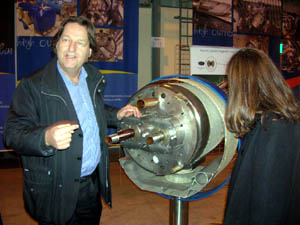
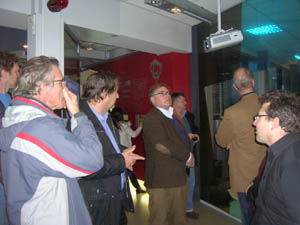
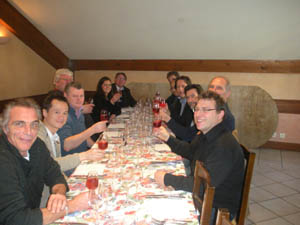










Club of Amsterdam blog

Club of Amsterdam blog
http://clubofamsterdam.blogspot.com
January 1: On the meaning of words
November 30: The happy organisation – a deontological theory of happiness
November 26: Utilitarianism for a broken future.
News about the Future

Flexible Organic Microprocessor
European researchers from Imec in Leuven, Belgium, unveiled the world’s first microprocessor made with organic semiconductors.
The 4000-transistor, 8-bit logic circuit has the processing power of only a 1970s silicon chip and executes commands at about 6 instructions per second but it is flexible allowing uses in flexible displays, or as sensors wrapped around food, pharmaceuticals or in industrial or science research as intelligent sensors.
The 25-micrometer-thick chip uses a polyethylene naphthalate plastic substrate covered with a 25-nanometer-thick gold layer that forms the circuit, with an organic dielectric, covered also by a second gold layer, topped off by the organic pentacene semiconductor.
Taking the technology to market will require some work but the researchers expect the chip costs to be around a tenth of similar (rigid) silicon circuits. Photolithographic printing techniques are used to make the layers, and controlling layer thickness and relative layer positioning will be important.

2011 Horizon Report
The annual Horizon Report describes the continuing work of the NMC’s Horizon Project, a research-oriented effort that seeks to identify and describe emerging technologies likely to have considerable impact on teaching, learning, and creative expression within higher education.
The Global Transformation of Healthcare

By Hardy F. Schloer, Schloer Consulting Group
“In an allegorical sense, we have created finely sculpted vessels and sharpened iron tools, and we leave them sitting idly by, holding tightly to our crude sticks and stone aged rocks! This is the state of information technological in the arena of modern global health care. It the intention of SCG to pick up those tools and use them. The welfare of the human race may depend upon it.”
Singapore, Tuesday 01:45 A.M.
Adib bin Rashed is from Dubai. He has recently moved to the country of Singapore on business, and has decided to enrol himself in the country’s state of the art, electronic, patient-focused, healthcare system, provided by the Schloer Consulting Group’s Healthcare Systems.
One night, while Adib is up working late on his laptop to finish a presentation, his new Iphone beeps, signaling the arrival of a new text message. He is curious about who would be trying to reach him at such a late hour. He soon realized that the message is from the Singaporean Healthcare Systems. The message was generated in the central 24-hour
HealthWatch Diagnostic Supercomputer Center. The message says:
Important HealthSystems Alert!
Alert level – high.
PAMA Code: ES007767473-006…
Consult Dr. Alfred Cheng (555-….)
Or contact another HealthSystems doctor near you!
Secure INFO at HYPERLINK “http://www….
Worried by the abrupt message concerning his health, Adib immediately wants to call his physician, Dr. Cheng, but realizes that is three in the morning, and as he has just moved to the region a few months ago, and still brushing up on his Chinese and Malaysian speaking skills, he feels distraught. Making matters worse, he is not familiar with any other doctors in Singapore. However, the high-alert message is very disconcerting, and he understandably wants to know the premise behind this late-night message.
Remembering that he is a member of the patient-focused Healthcare Systems, an on-line electronic health maintenance platform, he uses his laptop to connect to the Internet and log-on to his secure personal HealthSystems profile. Once logged in, he discovers a personalized message, clearly stating that one hour and five minutes ago, an important research team at a medical University in Singapore had recognized a new scientific study, reviewed in the United States and released earlier by the Cancer Research Center in Heidelberg, Germany. The study referred to important high risk conditions consistent with Adib’s past medical records, on file with the HealthSystems Data and Diagnostic Center.
Through his secure personal HealthSystems profile, there was a clear message explaining that the prescription medication Adib had had been taking for the past four years, given to him by his doctor in Dubai, together with a heart condition diagnosed by another doctor only two years in later in Abu Dhabi, could cause severe, and even life-threatening sideeffects, including heart failure. The warning stated that based on his age, dose of medication, and the extent of the indicated heart condition, that the risk of side effects was high and that his prescription should be reviewed, and almost surely changed.
Neither, the doctor in Dubai, nor the doctor in Abu Dhabi had ever communicated with one another about their patient, Adib. And as both had treated him for very different concerns, it is easy to see that neither was aware of the other doctor’s diagnosis or prescription, and neither was aware of the newly discovered risk of side effects. Adib himself not in contact with either doctor, since he had moved from the region. It is quite possible that both doctors in Adib’s life, considering their hectic schedule, even remember treating him.
Luckily for this man, both of the physicians in question had been operating with electronic medical records, and had recorded their medical findings, treatment, and the prescriptions Adib was taking into the global HealthSystems Online Medical Record System. Meanwhile, the world over, millions of other doctors and pharmacists had done the same thing with the information of million, if not billions, of patients. These reports were documented directly from their office, fully automated, without any extra effort by either doctor. They were done right from their examining room through the HealthSystems online patient management system. When Adib filled his prescriptions, the system noted in his file that he was still taking the prescribed drugs, and through his pharmacist, it learned his new address and telephone number.
While Adib was checking his on-line healthcare messaging system, the HealthSystems Supercomputer Center was simultaneously, and with great precision, using its watchful “eyes” to mine and sift through terabyte-sized databases. That night, just like every night, the system re-examined scores of past and present medical records, from hundreds of millions of patients all over the world. A component computer system reexamined each patient’s unique record, matching him or her with the latest findings of the global community’s medical research, and updating each record against state-of-the-art diagnostic capabilities.
The next day, Adib makes it his highest priority to visit Dr. Cheng, his physician in Singapore, to go over this disturbing alert. When he arrives to the office, the receptionist smiles, and shows him how to use a fingerprint scanner on the counter to “sign in.” Adib places his index finger on the scanner, and seconds later she says, “Good morning, Mr. bin Rashed. Dr. Cheng will be with you in just a few minutes. While Adib waits, his medical records are automatically retrieved from the HealthSystems Supercomputer Center. Almost instantaneously, these important records are sent to Dr. Cheng’s office computer, where they are decrypted according to Adib’s biometric identification (in this case, his fingerprint). The nurse only had to read the screen to know the patients name, as well as other administrative data. The medical information is routed to the doctor’s computer in the examining room.
By the time Adib and Dr. Cheng meet face to face, the practicing physician already knows an incredible amount of important information about his worried patient. He has, for example, already seen the disturbing warning message sent to Adib, and since it is the first time that Dr. Cheng has been informed of this contraindication study, he takes a few moments to access an on-line summary of the finds, checking some references. Then, via an automated decision-support system, Dr. Cheng can click a “suggested treatment” button to open a window with test procedures and treatment suggestions that are tailored especially for his patient Adib. This intelligent data determines whether there is an enhanced risk, and whether the prescriptions can be modified to remove this risk.
In this sense, an amazing thing has transpired. Before Adib has even come into the examination room, Dr. Cheng knows a great deal about his medical history, and the nurse is already setting up equipment for blood tests to streamline the visit. During the course of the physical examination, the doctor explains the situation to Adib, who feels a great sense of relief, knowing that he is receiving the best possible care, and that his healthcare system truly analyzed a life-threatening risk before it was too late.
The doctor is also able to use the system’s for possible supporting dietary recommendations and natural remedies, as well as safer pharmaceutical medicines for Adib. He decides that in this case, a different pharmaceutical option is necessary, and he prescribes him with a safer remedy, and encourages him to return for follow-up tests within the month.
During the course of the following month, the watchful eyes of the HealthSystems Supercomputer center will make it a priority to follow carefully the progress of Adib’s condition. The system will be gathering more information from patients all over the world with the same indications as Adib, making this data available for analysis, comparison, and further evaluation of current practice. The system has organized a clinical study, based on the published data, for a condition that was unknown thirty days ago, and under the supervision of monitoring physicians, the data it generates can be used by other doctors to improve the care that they can provide.
The entire aforementioned analytical and messaging process, with the exception of the physician supervision, transpired without any human intervention. The process is made possible through a centralized set of powerful computers that have the data storage capacity to unify all globally available medical knowledge. This system also has the analytical capacity to produce reliable intelligence about the actual patient records of member physicians. This process is enacted in real time, 24-hours a day, 7-days a week.
The same day that he met with Adib, Dr. Cheng will meet with many other patients. Each one of these patients will have their records registered and evaluated by the same centralized systems of supercomputers. For most of them, Dr. Cheng will enter a tentative diagnosis, and the system files it in their records. For a very few of them, the system will return information to the physician suggesting that certain features of their records do not support the diagnosis, leading Dr. Cheng to judge how certain he is of his conclusions. He is an excellent doctor and a specialist in these cases. In all cases but one, he is very sure of his conclusions, so he lets the HealthSystems system know. The system uses this to learn, adding the information from Dr. Cheng’s diagnosis to its database, supported by all the patient records. In the one remaining case, Dr. Cheng re-examines the clinical data, and orders a new test to differentiate one condition suggested by the HealthSystems computers to the condition he had diagnosed. In this sense, the doctor himself is able to educate himself on emerging intelligence in the field of medicine.
If the aforementioned scenario sounds like a futuristic scene from a science fiction movie, think again!
Each and every piece of the intricately orchestrated scenario described above, can be created with the tools and technologies available to the human global community today. The needed technical facilities are available. The networks exist. Supercomputers are fast enough today to process literally billions of patients in parallel, just as described in this story. Databases are powerful enough today, to carry the complete medical history of every human living on this planet, together with every bit of medical knowledge that has been developed in the past 5000 years, both preventive and reactive. The advanced technology industry has the know-how for creating software that can deal with complex information. Medical diagnostic software has been available and operating for thirty years. We know how to organize clinical studies, and we know how to combine the results of multiple studies. We know how to send notifications, how to encrypt and decrypt information using biometrics, and we know how to protect the privacy of patients in the process.
But somehow, despite all this knowledge, the human global community is still relating to healthcare with a stone-aged approach. We are still practicing the recording and application of medicine at technological levels that are far behind almost any other branch of science or industry. Doctors still routinely write down important medical information about their patients with pencil and paper, where it rots and molds in the paper archives of a thousand disconnected places. This information is not helpful to the medical community, not available for researchers, and not particularly helpful to the patients.
In an allegorical sense, we have created finely sculpted vessels and sharpened iron tools, and we leave them sitting idly by, holding tightly to our crude sticks and stone-aged rocks! This is the state of information technological in the arena of modern global health care. It the intention of SCG to pick up those tools and use them. The welfare of the human race may depend upon it. Every member of the medical community, from the practicing clinical physician, to the researchers, pharmaceutical companies, and government representatives, knows that clinical studies are expensive. They are expensive to organize and they are expensive to conduct. And yet, in the face of this huge expense, the medical community routinely discards nearly 100% of all collected information regarding patient care and treatment. This was perhaps necessary in the past, when the cost of storing, transferring, and transforming information was high, but within the context of existing technology, it is both irresponsible and foolish today.
Every clinical practitioner knows that the clinical practice of medicine is not a science. Each patient is unique, with a different genetic makeup, and a different environment. There are therapies that work for some will not work for others. On the other hand, every clinical practitioner has to know and stay current in clinical science.
Today the standard clinical tool for clinical scientists is the double-blind study, using as large a population as possible to measure the safety and efficacy of one or more drugs or treatments. The clinical results are published, and after a period that may take several years, they work their way into clinical practice. But the double-blind study is not the only reliable statistical technique. Consider, for example, that neither physics nor astronomy is done with double-blind studies. The double blind experimental design is one that is imposed by the current medical model, and not one imposed by science or technology. Consider also, for example, that a double blind design adds absolutely nothing to a computer analysis. One computer will absolutely analyze data the same way another one will. Computers are not “hopeful” of one outcome or another. Therefore, at a minimum, computers can reliably conduct studies of medical effects in populations even though the computers “know” the patients’ complete histories and current treatment regime. What is required here is a new model that is entirely within our existing information processing and statistical technologies.
It is not just medical research that is lagging far behind its potential. Equally important are the tremendous expenses in health care. These are mushrooming at rates that have long since passed sustainability. Governments and insurance providers have long begun to cut services and levels of treatments. People are living longer, and there is no sign that these trends will change. If the quality of medical services is improving at all, it is only because certain technological innovations, including a better understanding of chemistry and genetics, keeps advancing. But costs are increasing at a faster rate, and patients are being asked to carry a rapidly expanding financial burden. This includes paying for larger insurance premiums, paying more health care and retirement taxes, and bearing the burden of excluded conditions and treatments.
This is unfair to all; to the patients, to the medical community, and to financial providers such as insurance companies and governments that bear the costs of both research and treatment. It is also irresponsible, since this current explosion of cost is unsustainable even in the near term. We must recognize that the entire field of medicine is standing on a crossroads.
But there are good solutions. Technology is available to bring the quality of service to levels consistent with the 21st century rather then the 19th. We can give Adib his morning email message, with the support system described, in less then three years. That is, we could have the entire system in place and operating by the end of the first decade of the 21st century. When we do, the cost of health care and the cost of health research will be dramatically reduced.
With our modern global system, Adib will not be diagnosed in time. He could die, or could develop a chronic condition that requires intensive treatment, resulting from a lack of knowledge. Even more problematic is the scenario if we consider that there are 6.5 billion people like Adib, and none of them will receive centralized diagnostics in time to treat them. We have statistical expectations of millions of future cases of sick and disabled people that will leave the productive working process of society because our lack of coordinated information and treatment, causing a devastating economic impact. When people leave the workforce, taxes decrease. When they become permanent patients, health care spending increases. The costs of not using technological solutions for known problems are staggering, and the costs of the solutions are, by comparison, tiny.
Medicine must make several important transformations to come to levels that are appropriate for today’s state-of-the-art technology. The following presents five specific areas in which tools are available today, where using those tools could result in a much better quality of life for both doctors and patients:
Firstly, medicine must continue to develop better patient records systems.
Practitioners in the medical field must continue to centralize patient information, and engineers must make tools available to make this process inexpensive and easy, as well as reliable. This is the first and most important step. Currently, tools are available for reliable automatic translation between different languages (such as Chinese, Arabic, English or Spanish), working most efficiently on what a computer scientist would call “structured data.” Patient records are an example of structured data, that is, data whose content is very largely determined by its syntax. In the field “Patient Age”, for example, we do not expect to find “Dubai” or “Table top”. We expect to find a number greater than zero and less than a few hundred. Dealing with data of this kind is not hard, and we know how to do it.
Second, all doctors treating a patient should have access to the patient histories they need.
This means that the patient histories should be stored digitally, and should be in standard forms that doctors can understand. This will have the additional benefit that information need not be duplicated over and over. For example, tests are sometimes applied to patients (at great expenses to the insurance providers) that could be avoided if the results of previous tests would be preserved and centrally accessible to all doctors that come into contact with the same patient.
Third, privacy is a paramount concern.
This is a problem capable of technological solutions. We know, today, how to solve this problem. We solve it routinely in governments, using encryption and certificates, and we solve it routinely in the financial industries, in banking and insurance, and we can solve it in medicine. Not only the doctor, but also the patient himself should have access to all his own information at one central place of secure and reliable storage. Today, in some countries, medical information is the property of the doctor, or the insurance company, or some other industry. In the opinion of the author, this is wrong-headed, as the information should be the property of the patient, with access granted by regulation to medical providers who require it, and information of different sorts, at different abstractions, available to payers and others.
All of this can be arranged easily in a modern world were everything is networked together through the Internet. Advocates for privacy and security should know that data security is very good these days, and that techniques are available in the biometric area that could easily make it better. In fact, data would be much more secure at centralized encrypted systems that can only be accessed through biometric keys, similar as described in our example above, then how it is practiced today. A well-designed privacy system is critical to the organization of information.
Fourth, it is important to realize that modern doctors are not magical shamans possessing all the knowledge and all the answers to all the questions.
Medicine is a complicated field, combining human skills with medical science. Medical science gets exponentially more complex as new knowledge is developed everywhere 24 hours a day. Many aspects of environment, drug development, specializations, as well as many other elements, have made it very difficult for any doctor to know the right path of action all the time. It was once estimated, that a doctor would have to read 92 hours per day at the rate of 8 words per second, just to keep up with the constant development of medical knowledge. He would have to do so 365 days in the year. Obviously, this is not possible.
Doctors and patients alike deserve much better tools, better information, better real-time diagnostic help, to allow them to do a much better and much more efficient job at healing patients. It is absolutely possible, by today’s technological standards, to supply a webbased interface to every doctor, anywhere in the world, no matter how remote. This would allow a doctor record all his patient related information in a central global database, and would provide access a centralized global diagnostic system in real time, giving the most current and most accurate information possible.
Fifth, we must use such tools to not only curtail the constant increases of costs in the health care field, but more importantly, we need to lower costs.
Other, less expensive approaches, seek to bring the rate of increase of costs down. I would suggest otherwise. We need to advance this goal towards bringing costs down to the levels of the 1970s. We achieve this goal, while simultaneously increasing the level of service by orders of magnitude. From a technologist’s point of view, this is entirely possible. Cost can and must come down in the near term. When we consider that a huge part of health care costs are the result of needing prescription drugs, and that the major factor in the cost of prescription drugs results from the high costs of research, and specifically, from clinical trials, we realize that we can dramatically improve results in this area while dramatically decreasing costs, merely by recognizing a new valid statistical model, based on much, much more information.
We have been solving greater technological problems in other fields for decades. Military and financial systems are good examples in how the world of technology has transformed the respective fields into technological masterworks. Military forces can destroy the entire globe, or they can send one small missile into one window of one apartment half a world away. In manufacturing, we can (and do) make airplanes as large as buildings. We also move individual atoms, one by one, on a scale of some billions of times. Society has created this situation by resolving to solve certain problems, and to funnel spending into these areas. Should a problem arise in the military science, manufacturing, or finance industry, solutions are found often within days of the problem being stated.
That same level of technological response is also available in the medical field, but somewhere somebody needs to make the first step to begin such urgently needed transformation.
How can we move beyond the impasse of this technological stalemate? It appears to me, that we need the political will and the uncompromising courage of governmental decision makers to begin such much-needed transformation. Technologists have to sit down with representatives of government and the medical community to take the first steps in the implementation of modern technology based health care. We can do this. We, the technologists, have the tools for health care, but it will take the blessing and leadership of inspired governmental decision-makers to begin the process.
So, here is my personal cry for help and participation on behalf of patients, the medical community and the technologists:
Government, please, lets not wait any longer! We can’t bear the burden of your indecision any longer. We must act now; today, right here. Don’t wait for anyone else to do it. Take ownership of the problem. Take leadership and act on your responsibilities. Give your voters what they expect and deserve. Make the first step, and all will follow.
Doctors, don’t accept second best any more. We have the tools to deliver to you, today, medical information technologies, reliable studies, treatment methods, communications tools, and of course, payment systems, that will enhance the quality of your lives and your patients. These tools are available to the military, to the financial industry, and to manufacturing. It is completely unacceptable, and even immoral, that they should not be used to improve.
Recommended Book
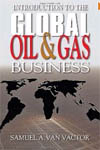
Introduction to the Global Oil & Gas Business
By Samuel A. Van Vactor
To the casual observer, the oil business seems constant and unchanging. The familiarity of the oil industry’s retail outlets masks extraordinary changes in how the industry engages in its four primary sectors of activity: finding and producing crude oil, transportation, refining, and marketing.
In his new book, noted energy economist Dr. Samuel A. Van Vactor chronicles the oil industry’s transformation over the last century and discusses the future of an industry that has been pronounced dead or dying by its critics on numerous occasions since the early development of coal and the steam engine.
New professionals, industry executives, government officials, and academicians will find Introduction to the Global Oil & Gas Business to be a concise introduction to the industry and an invaluable source of information.
Sustainable Development and Poverty Eradication
Towards a Green Economy: Pathways to Sustainable Development and Poverty Eradication – A Synthesis for Policy Makers
A UNEP Report
A Summary of the Conclusions
Investing just 2% of global GDP into ten key sectors can kick-start a transition towards a low-carbon, resource-efficient economy. The new UNEP report demonstrates that a transition to a green economy is possible by investing 2% of global GDP per year (currently about US 1.3 trillion) between now and 2050 in a green transformation of key sectors, including agriculture, buildings, energy, fisheries, forests, manufacturing, tourism, transport, water and waste management. However, such investments must be spurred by national and international policy reforms.
Conducted by global experts and institutions from both developed and developing countries, this timely report confirms that under a green economy scenario economic growth and environmental sustainability are not incompatible. On the contrary, a green economy creates jobs and economic progress, while at the same time avoiding considerable downside risks such as the effects of climate change, greater water scarcity and the loss of ecosystem services.
Greening the economy not only generates growth, and in particular gains in natural capital, but it also produces a higher growth in GDP and GDP per capita. Under the GER modeling exercise, a green investment scenario achieves higher annual growth rates than a business as usual scenario within 5-10 years. This economic growth is characterized by a significant decoupling from environmental impacts with the global ecological footprint to biocapacity ratio projected to decline from a current level of 1.5 to less than 1.2 by 2050 – much closer to a sustainable threshold value of 1 – as opposed to rising beyond a level of 2 under business as usual.
Global demand for energy rises somewhat but returns to current levels by 2050, which is about 40% less than what is expected under business as usual thanks to substantial advances in energy efficiency. A green investment scenario is projected to reduce energy-related CO2 emissions by about one-third by 2050 compared to current levels. The atmospheric concentration of emissions should be held below 450 ppm by 2050, a level essential for having a chance to limit global warming to the 2°C threshold.
A green economy values and invests in natural capital. One-quarter of the green investments analyzed – 0.5% of GDP (US $325 billion) – is allocated to natural capital sectors: forestry, agriculture, freshwater and fisheries. Value added in the forest industry rises by about 20% in 2050 as compared to business as usual. Investments in green agriculture ranging from US $100-300 billion per year over 2010-2050 would lead over time to rising soil quality and increasing global yields for major crops, representing an improvement of 10% above what is possible with current investment strategies. Increased efficiency in agriculture, industrial and municipal sectors would reduce demand for water by about a fifth by 2050, as compared to projected trends, reducing pressure on groundwater and surface water in both the short and long term.
A green economy can contribute to poverty alleviation. There is an inextricable link between poverty alleviation and the wise management of natural resources and ecosystems, due to the benefit flows from natural capital that are received directly by the poor. It is particularly important in low income countries, where ecosystem goods and services are a large component of the livelihoods of poor rural communities and provide a safety-net against natural disasters and economic shocks.
In a transition to a green economy, new jobs will be created, which over time exceed the losses in “brown economy” jobs. This is particularly notable in the agriculture, buildings, energy, forestry and transport sectors. However, in sectors whose capital is severely depleted, such as in fisheries, greening will necessitate the loss of jobs and income in the short and medium term in order to replenish natural stocks and prevent a permanent loss of income and jobs. It may also require an investment to re-skill and re-educate the workforce.
Prioritizing government investment and spending in areas that stimulate the greening of economic sectors is on the critical path. Reforming costly and harmful subsidies in all sectors will open fiscal space and free resources for a GE transition. Removing subsidies in energy, water, fisheries and agriculture sectors, alone, would save 1-2% of global GDP a year. Fisheries subsidies, for example, estimated at around US $27 billion a year, result in more damage than long-term gains to national economies and social welfare. Price and production subsidies for fossil fuels collectively exceeded US $650 billion in 2008, and this level of support discourages the transition to renewable energies.
Using instruments, such as taxes, incentives and tradable permits to promote green investment and innovation is also essential, but so is investing in capacity building, training and education. Strengthening international governance and global mechanisms that support a transition are important. The UN Conference on Sustainable Development (Rio+20 Summit) in 2012 will be an opportunity to set a new direction for a more sustainable, secure and just world.
The scale of financing required for a green economy transition is substantial, but an order of magnitude smaller than annual global investment. In this regard, it is worth noting that the 2% of global GDP modeled in the report is a fraction of total gross capital formation – about 22% of global GDP in 2009). This amount can be mobilized by smart public policy and innovative financing mechanisms. The rapid growth of capital markets, the market’s increasing interest in green initiatives and the evolution of alternative instruments, such as carbon finance and microfinance, are opening up the space for large-scale financing for a global economic transformation. However, these amounts are still small compared to total volumes required, and urgently need to be scaled up.
The move towards a green economy is happening on a scale and at a speed never seen before. For 2010, new investment in clean energy was expected to reach a record high of US $180-200 billion, up from US $162 billion in 2009 and US $173 billion in 2008. Growth is increasingly driven by non-OECD countries, whose share of global investment in renewables rose from 29% in 2007 to 40% in 2008, with Brazil, China, and India accounting for most of it.
It is expected to generate as much growth and employment – or more – compared to the current business as usual scenario, and it outperforms economic projections in the medium and long term, while yielding significantly more environmental and social benefits. However, such a transition to a green economy will not be without its risks and challenges – from “greening” traditional brown sectors to meeting rapidly changing market demands in a carbonconstrained world. Therefore, world leaders, civil society and leading businesses must engage collaboratively to rethink and redefine traditional measures of wealth, prosperity and well-being. What is clear is that the biggest risk of all would be to continue with the status quo.
LED teeth
LED teeth are the latest trends to hit Japan.
The new fashion accessories were originally created as an experiment by two Japanese designers and are now being used in a commercial advertising of Japanese clothing store, Laforet Harajuku.
The LED insert, which can be affixed to your teeth like a mouth-guard, lights up when you smile.
Japanese schoolgirls have gone crazy over the LED mouth-guard, which is being advertised as a ‘party in your mouth.’
There is a wireless hand-held computer that is available which can control the LED teeth. This means you can make them blink or change colour – from a lurid green to a blinding red.
Motoi Ishibashi, one of the designers involved in the project, explained in a blog post that the original idea for the LED smiles came after he saw a video last year of LED Throwies, which are little lights that can be affixed to a magnet and thrown on metal surfaces. They are like lighted graffiti.
Ishibashi and Daito Manabe, the other designer and technologist on the project, are offering workshops in Japan to show people how to build their own LED smiles.
Futurist Portrait: Richard Worzel
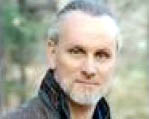
Richard Worzel: “I am a futurist, and a professional member of the World Future Society. I make my living by helping corporations and industry associations plan intelligently for the future. I focus on North America, but deal with global issues. My Client list includes companies like Ford, IBM, Bell Canada, Xerox, Nortel, and Lucent Technologies.”
How do you anticipate the future?
There are several specific future studies techniques, which will only be touched on here. An environmental scan is just that: watching what is happening elsewhere to see if it has relevance to you and what you do. Hence, for instance, social trends often start in northern Europe before reaching North America. Within North America, they often start on the west coast, frequently in the San Francisco area.
Scenario planners dissect the future into major forces, then try to decide how each force might change the status quo. Their ultimate objective is to produce from two to five different scenarioes that they feel portray the major possibilities for the future, along with the “tell-tales” or early warning indicators, that will help you decide which future is likely to come to pass.
There are other tools as well that are less widely used, from complexity theory to Delphi techniques. However, at the end, all of these have one central shared feature: those who use any of these techniques must be well-informed about what is happening now, and they must be able to think clearly and coherently about what the next logical consequences might be. Therefore, the simple answer to “How do you do it?” is: learn widely, and think well.
It must be pretty easy talking about things that might happen 20 years from now. Who’s going to remember?
Since I’m not trying to predict the future, I don’t worry about whether people remember what I said 20 years ago (although I’ve done pretty well, looking back). Instead, I hold myself to a higher standard: when I’m finished speaking with you, have I changed the way you perceive the future, think about the future, and prepare for the future? If so, then I’ve done my job, whether it turns out 20 years from now that I was right. You should be able to tell when I walk out of the room whether I did my job. It’s a subjective measure, and it’s your call
Agenda
| Our Season Program 2010/2011 | ||
March 17, 2011 18:30-21:15 April 14, 2011 18:30-21:15 May 19, 2011 18:30-21:15 June 23, 2011 18:30-21:15 | | the future of Shell Location: Shell Technology Centre Amsterdam, Grasweg 31, 1031 HW Amsterdam  the future of the Human Mind Location: HTIB, 1e Weteringplantsoen 2c, 1017 SJ Amsterdam the future of Singularity Location: HTIB, 1e Weteringplantsoen 2c, 1017 SJ Amsterdam the future of European Democracy Location: Nautiek.com, Veemkade 267, 1019 CZ Amsterdam (Ship SALVE) |
 |




Customer Reviews
Thanks for submitting your comment!